The Leibniz-IZW is an internationally renowned German research institute. It is part of the Forschungsverbund Berlin e.V. and a member of the Leibniz Association. Our goal is to understand the adaptability of wildlife in the context of global change and to contribute to the enhancement of the survival of viable wildlife populations. For this purpose, we investigate the diversity of life histories, the mechanisms of evolutionary adaptations and their limits, including diseases, as well as the interrelations of wildlife with their environment and people. We use expertise from biology and veterinary medicine in an interdisciplinary approach to conduct fundamental and applied research – from the molecular to the landscape level – in close dialogue with the public and stakeholders. Additionally, we are committed to unique and high-quality services for the scientific community.
+++ Current information on African swine fever: The Leibniz-IZW conducts research on the population dynamics, on models of disease outbreaks in wild boars and on the ecology and human-wildlife interaction in urban areas. African swine fever is a reportable disease in domestic swine and therefor is the purview of the respective federal state laboratories and the Friedrich-Loeffler-Institut (Federal Research Institute for Animal Health) FLI. +++
News
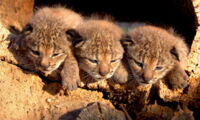
Corpus luteum cells of cats successfully cultivated and comprehensively characterized – another milestone in the elucidation of the phenomenon of long-lived corpus lutea in lynxes
The reproduction of lynxes is highly mysterious. Unlike other wild cats, most lynxes are only receptive for a few days once a year. As scientists from the Leibniz Institute for Zoo and Wildlife Research (Leibniz-IZW) have already shown in the past, this is a consequence of the long life of corpus lutea in the ovaries which prevents further ovulation during the course of the year. The Berlin team has now achieved another breakthrough in solving the puzzle: they were able to isolate several cell types of corpus luteum from domestic cat tissue and characterise their function in detail with the help of cell cultures. The new method can also be applied to endangered felids such as the Iberian lynx and could advance our understanding of the causes and mechanisms of the longevity of corpus lutea in lynxes. The ultimate goal in practical terms is to induce ovulation with the help of corpus luteum hormones. This would enhance the support for the reproduction of the highly endangered Iberian lynx in breeding programmes.

Berlin’s bright sky isn’t a bat’s thing
People can hardly imagine a city without night-time street lighting. But how do nocturnal animals such as bats respond to the illuminated urban landscape? In a recent study, scientists from the Leibniz Institute for Zoo and Wildlife Research (Leibniz-IZW), together with German and international colleagues, equipped common noctule bats (Nyctalus noctula) with mini GPS transmitters and recorded their trajectories in the sky above Berlin. They show that common noctules avoid brightly lit, built-up areas. The metropolitan area of Berlin is therefore mostly unsuitable as a habitat for bats. Dark corridors such as city forests, parks or watercourses, on the other hand, are of great importance for commuting and foraging. The results are published in the journal "Landscape Ecology".

Southern white rhinos are threatened by incest and habitat fragmentation – targeted measures can help to avert this danger
The fragmentation of natural habitats by fences and human settlements is threatening the survival of the white rhinoceros. It prevents dispersal from the family group and leads to mating among close relatives. Additionally female rhinoceros favour individual males for mating over others and sire several offspring with the same partner over consecutive breeding periods. These factors lead to a high degree of inbreeding. The results come from the largest scientific study to date on the sexual preferences of white rhinos, published in the journal "Evolutionary Applications". The scientists propose specific measures to ensure the long term survival of the species.
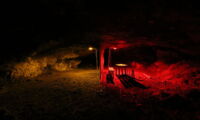
Illumination drives bats out of caves – no matter the colour of the light
Artificial light influences the behaviour of many nocturnal animals such as bats, which are very sensitive to all types of lighting. Particularly critical is the illumination of natural caves in which bats roost. Cave illumination is widespread in tourist areas worldwide and disturbs the animals in their resting places. Researchers of the Leibniz Institute for Zoo and Wildlife Research (Leibniz-IZW) and the Max Planck Institute for Ornithology (MPIO) have now investigated how the illumination of bat caves affects the animals’ behaviour and whether the colour of light makes a difference on their flight and emergence activity. Although red light irritates the small mammals somewhat less than white light, from the researchers' point of view neither the entrance nor the interior of bat caves should be illuminated if bats are present. The results are published in the journal "Global Ecology and Conservation".
Read more … Illumination drives bats out of caves – no matter the colour of the light
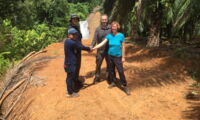
New rainforest conservation initiative converts oil palm plantations into rainforest for the first time
An alliance of conservationists and researchers is converting oil palm plantations into near-natural rainforests on Borneo. In this way, an important wildlife corridor can be restored. The research project is to serve as a blueprint for future conversion measures in Malaysia and Indonesia. The pilot project makes an important contribution to nature, species and climate protection.
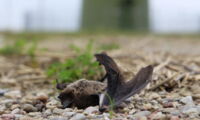
Biodiversity and wind energy: How stakeholders evaluate the green-green dilemma – and what they think about possible solutions
The replacement of fossil and nuclear energy sources for electricity production by renewables such as wind, sun, water and biomass is a cornerstone of Germany’s energy policy. Amongst these, wind energy production is the most important component. However, energy production from wind is not necessarily ecologically sustainable. It requires relatively large spaces for installation and operation of turbines, and bats and birds die after collisions with rotors in significant numbers. For these reasons, the location and operation of wind energy plants are often in direct conflict with the legal protection of endangered species. The almost unanimous opinion of experts from local and central government authorities, environmental NGOs and expert offices is that the current mechanisms for the protection of bats in wind power projects are insufficient. This is one conclusion from a survey by the Leibniz Institute for Zoo and Wildlife Research (Leibniz-IZW) published in the "Journal of Renewable and Sustainable Energy".
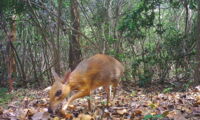
FOUND: Miniature Fanged ‘Deer’ Rediscovered Tiptoeing Through Vietnam’s Coastal Forests
First-ever Photos and Footage of Silver-backed Chevrotain Confirm First Rediscovery of Lost Mammal on Global Wildlife Conservation’s ‘Most Wanted’ List
Read more … FOUND: Miniature Fanged ‘Deer’ Rediscovered Tiptoeing Through Vietnam’s Coastal Forests
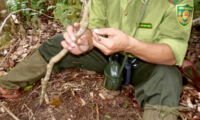
In Southeast Asia, illegal hunting is a more immediate threat to wildlife than forest degradation
In Southeast Asia, illegal hunting is a more immediate threat to wildlife than forest degradation




